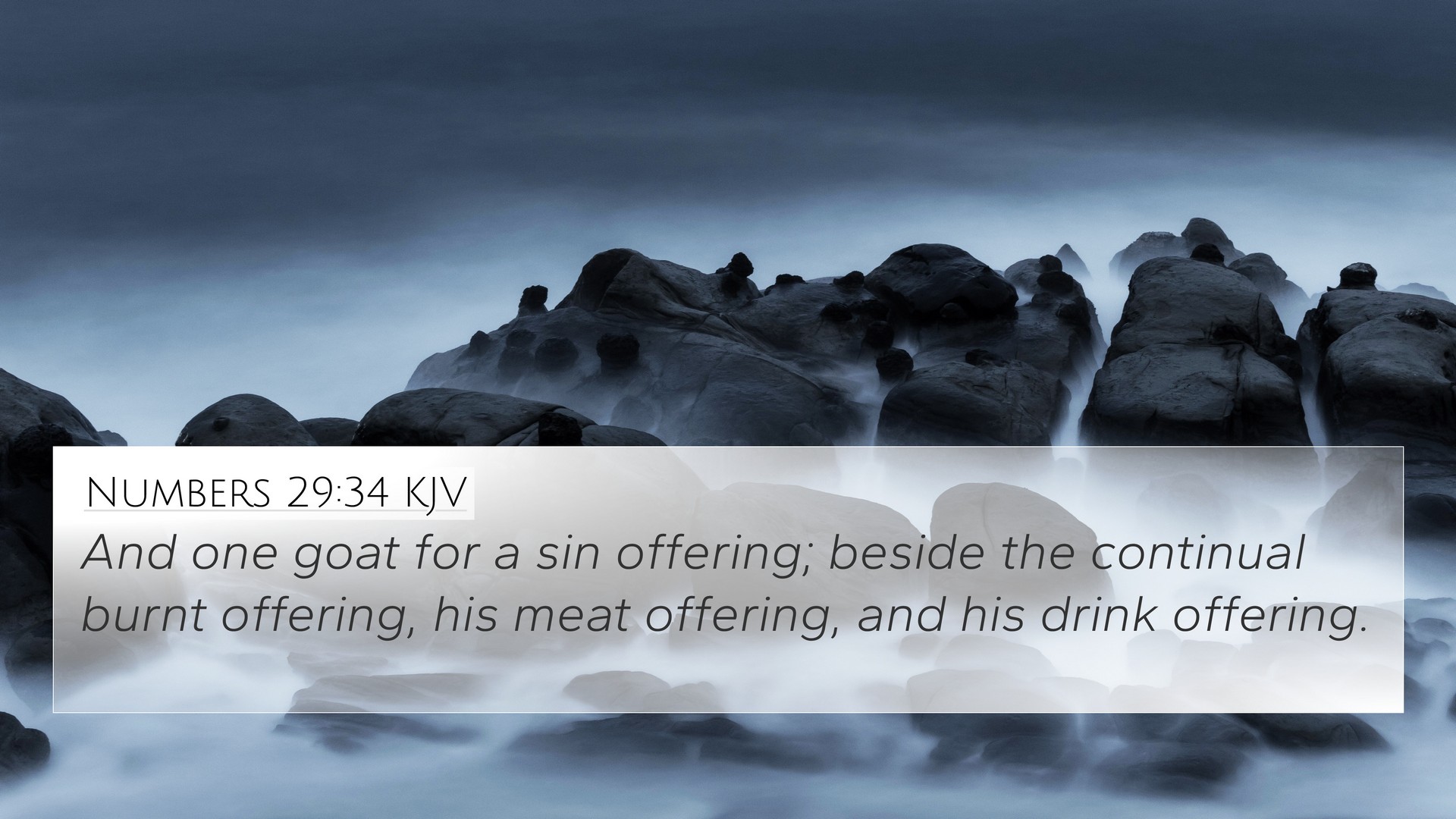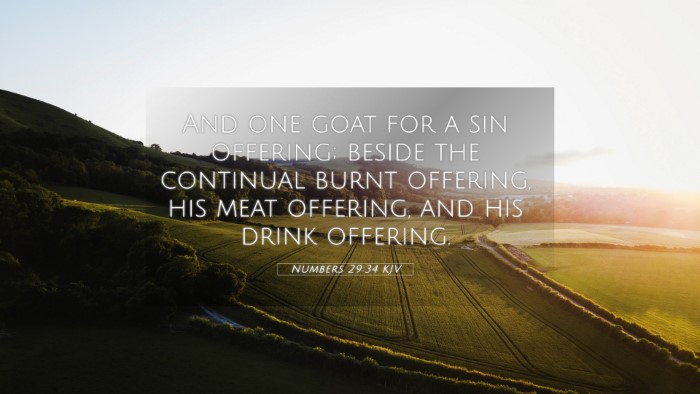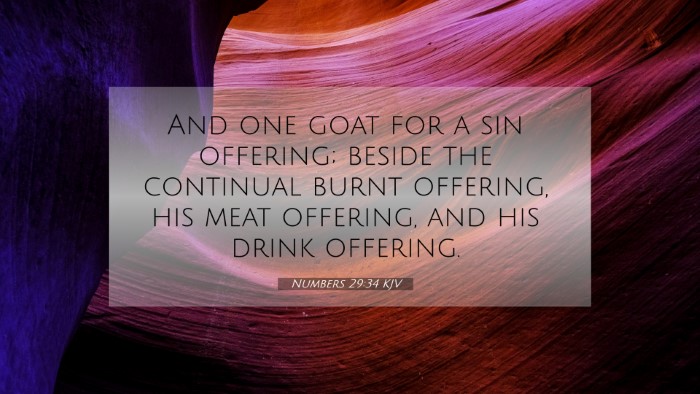Understanding Numbers 29:34
Numbers 29:34 states: "And you shall offer them, one bull, one ram, and seven lambs in their first year, without blemish, for a burnt offering to the Lord; and their grain offering and their drink offerings will be, according to their ordinance, a sweet aroma to the Lord."
This verse is part of the instructions given to the Israelites regarding offerings, particularly during the Feast of Tabernacles. It outlines the specific offerings to be made, emphasizing their significance in worship and the requirement of offering animals without blemish, which symbolizes purity and devotion.
Commentary Insights
Matthew Henry's Commentary
Matthew Henry highlights the importance of these offerings within the context of God's covenant with His people. He notes that the offerings are an expression of gratitude and dedication to God, reinforcing the theme of sacrifice that runs through both the Old and New Testament. The notion of a "sweet aroma" signifies that these offerings please God, reflecting His acceptance of their worship.
Albert Barnes' Commentary
Albert Barnes focuses on the detailed specifics of the offerings, analyzing the symbolic meanings behind each element. He mentions that the bull, ram, and the lambs represent different levels of sacrifice, each carrying distinctive significance. Barnes also points out the connection to Christ’s sacrifice in the New Testament, where He is seen as the ultimate unblemished offering for humanity.
Adam Clarke's Commentary
Adam Clarke emphasizes the communal aspect of these offerings, which not only express individual devotion but also signify collective worship as a nation. He explains that these rituals helped to foster unity among the Israelites and served as a reminder of their dependence on God’s grace. Clarke also points to the foreshadowing of Jesus, who fulfills the sacrificial system through His own offering.
Bible Cross References
This verse is deeply connected with other scriptures, illustrating the overarching themes of sacrifice, worship, and covenant. Here are some significant cross-references:
- Exodus 12:5 - Discusses the sacrificial lamb without blemish.
- Leviticus 1:3 - Details on the burnt offering requirements.
- Hebrews 9:14 - Connects the Old Testament sacrifices to Christ’s ultimate sacrifice.
- Romans 12:1 - A call to present ourselves as living sacrifices, linking to the themes of worship.
- 1 Peter 1:19 - Mentions Christ as the lamb without blemish.
- Psalm 51:17 - God desires a broken spirit and contrite heart over sacrifices.
- Isaiah 53:7 - Foreshadows Christ’s sacrificial role as the suffering servant.
- John 1:29 - "Behold, the Lamb of God," connecting Jesus to the sacrificial lamb theme.
- Revelation 5:6 - The Lamb who was slain, highlighting the eternal impact of the sacrifices.
- Colossians 1:20 - Through Christ, God reconciles all things back to Himself, emphasizing the significance of His sacrifice.
Thematic Connections
The themes in Numbers 29:34 echo throughout the Bible, emphasizing the importance of sacrifice and the nature of God’s relationship with humanity. These offerings represent not just compliance with the law but also an intimate expression of worship and acknowledgment of God’s sovereignty.
Connecting Bible Verses
Observing how different verses interconnect can deepen one’s understanding of scripture. For example, the concept of unblemished sacrifices leads to an in-depth study of:
- How to find cross-references in the Bible - Engage with tools like a Bible concordance or cross-reference Bible study guides.
- Identifying connections between Old and New Testament - Explore how sacrificial themes transition and evolve in theological context.
- Cross-reference themes in the Bible - Study the overarching narrative present in both Testaments.
- Bible cross-references for sermon preparation - Utilize inter-Biblical connections for teaching and preaching.
- Comparative study of Pauline epistles - Examine how Paul draws upon sacrificial imagery in his letters.
Conclusion
Numbers 29:34 serves as a profound reminder of the sacrificial system instituted in the Old Testament, which foreshadows the ultimate sacrifice made by Jesus Christ. Understanding this verse in context allows for a richer interpretation of the Bible as a cohesive collection of texts, each linked through thematic and narrative parallels.


